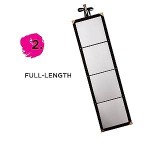How To Mirror iPad to Roku TV Without Wi-Fi
Mirroring an iPad screen to a Roku TV typically relies on a shared Wi-Fi network. However, several scenarios may necessitate a wireless network-independent mirroring solution. These situations might include limited Wi-Fi availability, network congestion, or simply a preference for direct connections. This article explores methods to achieve iPad to Roku TV mirroring without relying on a traditional Wi-Fi setup.
Using Hardware Adapters for Direct Connection
Hardware adapters offer a reliable way to bypass Wi-Fi and establish a direct connection between the iPad and the Roku TV. These adapters typically utilize HDMI connections and may require additional power sources depending on the specific model.
Here's a breakdown of the process:
- Acquire a Lightning to HDMI adapter: Ensure the adapter is Apple-certified for compatibility.
- Connect the Lightning end to the iPad: Plug the adapter securely into the iPad's charging port.
- Connect an HDMI cable to the adapter and TV: Use a standard HDMI cable to connect the adapter to an available HDMI port on the Roku TV.
- Select the correct HDMI input on the Roku TV: Using the Roku remote, navigate to the input settings and select the HDMI port connected to the adapter.
- The iPad screen should now mirror to the TV: Audio and video from the iPad will be transmitted to the Roku TV.
Leveraging Screen Mirroring Functionality in Apps (Where Available)
Certain apps offer built-in screen mirroring capabilities independent of the network environment. This functionality depends entirely on the specific app and its compatibility with Roku's ecosystem.
Here's a general approach:
- Open the App: Launch the app with screen mirroring capabilities on your iPad.
- Locate the screen mirroring icon: This icon often resembles a screen with a radiating signal.
- Select your Roku TV from the available devices: The app will scan for available devices, and your Roku TV should appear if compatible.
- Initiate the mirroring process: After selecting the Roku TV, the app will initiate the mirroring session, and content should display on the TV screen.
Utilizing Portable Wireless Access Points
While this method doesn't eliminate Wi-Fi entirely, it creates a localized network separate from your primary network. This can be helpful in environments with no existing Wi-Fi or when the available network is unreliable.
Here's the process:
- Acquire a portable wireless access point: These devices are small and often battery-powered, creating a personal Wi-Fi hotspot.
- Connect the iPad to the portable access point's network: Configure the access point and connect your iPad to its generated Wi-Fi network.
- Connect the Roku TV to the same network: In the Roku TV's network settings, connect it to the same Wi-Fi network created by the portable access point.
- Use the standard Roku screen mirroring feature: Once both devices are on the same localized network, follow the standard Roku screen mirroring procedure from your iPad's Control Center.
Using Wired Connections Through Travel Routers
Similar to a portable access point, a travel router offers a dedicated network but also allows for wired connections.
Here's how to set it up:
- Obtain a travel router: Select a travel router that offers both wired and wireless connectivity.
- Connect the Roku TV to the router via Ethernet: Use an Ethernet cable to connect the Roku TV directly to the travel router.
- Connect the iPad to the router's Wi-Fi network: Connect your iPad to the wireless network broadcasted by the travel router.
- Mirror through the standard screen mirroring feature: With both devices on the same network, use the standard iPad screen mirroring function.
Exploring Third-Party Apps for Mirroring
Some third-party apps facilitate screen mirroring without relying on standard Wi-Fi connections. However, these apps may have limitations in terms of functionality or stability.
Here are some points to consider:
- Research Available Apps: Explore app stores for screen mirroring apps compatible with Roku devices.
- Check User Reviews: Reviews provide insights into the app's reliability and performance.
- Understand App Requirements: Some apps may require subscriptions or specific hardware configurations.
- Test Thoroughly: Once installed, test the app thoroughly to ensure it meets your mirroring needs.
Considering DLNA Compatible Media Servers
DLNA (Digital Living Network Alliance) provides a standard for sharing media across different devices. Setting up a DLNA server on your iPad can allow the Roku TV to access content without direct mirroring.
Here are the steps:
- Install a DLNA Server App: Find and install a reputable DLNA server app from the App Store.
- Configure the Server: Set up the server and choose the media you wish to share.
- Access the Server from Roku: Use a DLNA-compatible media player on your Roku TV to access the content hosted on the iPad's server.
Choosing the right method depends on specific needs and available equipment. While hardware adapters offer a direct and reliable solution, software-based methods provide greater flexibility. Carefully consider factors such as video quality, latency, and ease of setup when choosing a mirroring solution.

How To Mirror Iphone Roku Without Wifi 5 Steps With Pictures

How To Mirror Iphone Roku Without Wifi 5 Steps With Pictures

How To Mirror Iphone Roku Without Wifi 5 Steps With Pictures

How To Use Roku Without Wifi

3 Easy Methods How To Mirror Iphone Rokutv Airdroid

How To Mirror Iphone Roku Without Wifi 5 Steps With Pictures

How To Use Airplay Apple Tv Without Wi Fi Full Guide

How To Use Airplay Apple Tv Without Wi Fi Full Guide

Can You Screen Mirror Without Wi Fi 2024 Answered

Screen Mirror On Roku Stick Without Wifi








